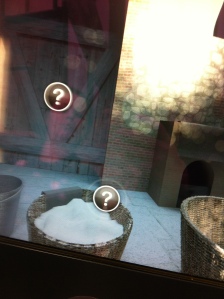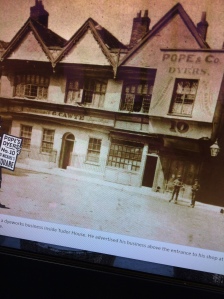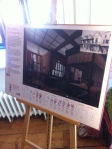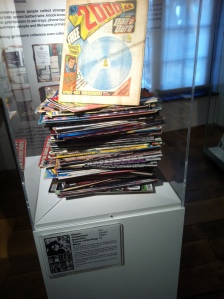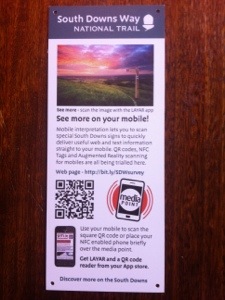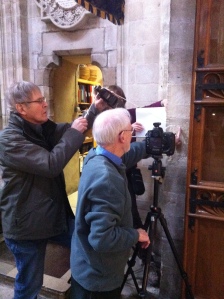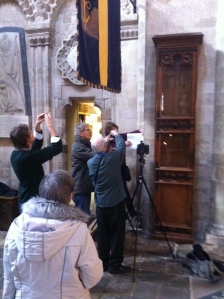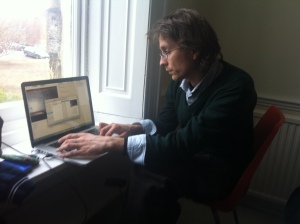“There are very few books on new media worth reading.” (Galloway. A, 2012, 1)
My supervisors said something very similar in our first meeting, but despite that assertion, exploring the university library last week, I came across The Interface Effect (2012 Alexander R Galloway). It looked interesting, so I took it out. As the blurb says “Grounded in philosophy and cultural theory and driven by close readings of video games, software, television, painting and other images, Galloway seeks to explain the logic of digital culture through an analysis of its most emblematic and ubiquitous manifestation – the interface.”
Firstly, I’m not convinced it was written as a book. Each of the six chapters (four “chapter”s actually – but an introduction and a postscript) feels as though it was written as a separate article, and only minimally edited to make the collection connect (arguably) into a single narrative. Galloway also demonstrates a mild case of “philosopher’s itch” – preferring not to use an English word when a Greek one is available. For example, when discussing what anyone else would call the “forth wall” (he is referring to this picture, from which Mad mascot Alfred E. Neuman peeks at the reader) he has to use the words “orthogonally outwards” (p38)
He also asks one of the same questions I’m researching: “Are games fundamentally about play or about narrative?” (p23) which makes his refusal to suggest and answer somewhat frustrating.
Galloway does use the book to make some good points though, for example, from the preface (pvii) “Interfaces are not things, but rather processes that effect a result of whatever kind” and “culture is history in representational form.” He expands upon interfaces are processes idea on page 18 “What if we refuse to embark from the premise of “technical media” and instead begin from the perspective of their supposed predicates: storing, transmitting and processing? With the Verbal nouns at the helm, a new set of possibilities appears. These are modes of mediation, not media per se.”
I also like the passage in which Galloway distinguishes between the cinema and ICT “In effect, the cinema forces us to don the Ring of Gyges, making the self an invisible half-participant in the world… the computer is an anti-Ring of Gyges. The scenario is inverted. The wearer of the ring is free to roam around in plain sight, while the world, invisible, retreats in absolute alterity. The world no longer indicates to us what it is. We indicate ourselves to it, and in doing so, the world materialises in our image.” (pp11 – 13) Cinema, he says, is an ontology (the branch of metaphysics dealing with a the nature of being) “while the computer is, in general, an ethic… I make the distinction between an ethic, which describes the general principles for practice, and the realm of the ethical… And this is the interface effect again only in different language: the computer is not an object, or a creator of objects, it is a process or active threshold mediating between two states.” (pp22-23) This makes even more sense when he quotes, on page 32, Francois Dagognet’s assertion that “the interface… consists essetially of of an area of choice. It both separates mixes the two worlds that meet together there, that run into it. It becomes a fertile nexus.” (Dagognet. F, 1982 Faces, Surfaces, and Interfaces Paris, Librairie Philosphique J. Vrin)
Galloway takes a look at World of Warcraft, and in doing so teaches me more Greek. Look at the screen when someone is playing and you’ll see two things. The player’s character walks around the world, fights etc. in the diegetic space. Diegesis is, I discover, the correct term for the world in which action takes place in any work of fiction. In WoW, there’s also a “nondiegetic space… The thin, two dimensional overlay containing icons text, progress bars, and numbers.” (p42) He returns to the game later to ask “Why do games have Races and Classes? (p129) I might have told him the answer to that one – its because most of them are based on Dungeons and Dragons, the grand-daddy of pen and paper Role Playing Game created in the seventies. D&D was a development Chainmail, a medieval wargame played with toy figures, and races and classes were created to be a shortcut for players to differentiate their “characters” from the uniform rank and file soldiers that had previously populated the game-world (which I guess I should call the diegesis). Many tabletop roleplaying gamers quickly grew out of using such archetypes, and systems like Generic Universal RolePlaying System, allow far more flexible and nuanced character creation. That said, much of the fiction written in the genre still features racial archetypes, so even GURPS still allows you to create an Elven Archer if you so desire. Galloway recognises that the Races and Classes in WoW are algorithmic short-cuts, just as they were in Dungeons and Dragons, and points out that “race is static and universal while class is variable and learned… What this means means is that race is ‘unplayable’ in any conventional, for all the tangible details of gamic race (voice. visage, character animation, racial abilities, etc.) are quarantined into certain hardcoded machinic behaviors.” (pp131-2) This isn’t how even D&D was played, racial abilities (bonuses) might have been hard coded, but with the player’s imagination providing the rest of “the tangible details of gamic race” anything was possible. Pretty much anything is possible in the virtual world Second Life too, but WoWs enduring popularity over that diegesis (! I better not wear this new word out) mirrors D&D’s enduring popularity over a myriad of more customisable pen and paper RPG systems. Galloway sees this a problem, and so it may be, but is it really analogous (as he suggests on page 133) to the disgraceful “blackface minstrel” that was Jar Jar Binks? Or is it just because using race and class archetypes is less work for the players than creating a rounded character from scratch?
Galloway addresses work too, the the idea of the Chinese Gold Farmer as his springboard. “Recall the narrative again, that somewhere off in another land are a legions of Chinese gamers, working in near sweatshop conditions, playing games to earn real cash for virtual objects.” (p135) He argues that whatever the truth behind the narrative, we are all in fact gold farmers, “it is impossible to differentiate cleanly between play and work… The new consumer titans Google or Amazon are the masters in this domain. No longer simply a blogger, someone performs the necessary labor of knitting networks together. No longer simply a consumer, browsing through links on an e-commerce site, someone is offloading his or her tastes and proclivities into a data-mining database with each click and scroll. No longer simply keeping up with email correspondence, someone is presiding over the creation and maintenance of codified social relationships. Each and every day, anyone plugged into a network is performing hour after hour of unpaid micro labor.”
The closest we get to an examination of narrative within the digital domain is not his examination of WoW, but rather an interpretation of the successful TV thriller, 24. His assertion that the interrogation scenes are “merely the technique for information retrieval. The body is the database, torture a query algorithm” (p112) is amusing but there’s more meat for me to explore when he moves away from the TV to look again at cinema. He describes films like Robert Altman’s Nashville and Short Cuts, among others, as “the visual and narrative equivalent of graph theory and social network theory” (p117).
There are a few other lines which I want to think about more. For example: “A tension remains between software, which I suggest is fundamentally a machine, and ideology, which is generally understood as narrative of some sort of other… narrative cannot exist in code as such, but must be simulated, either as a “narrative” flow function governing specific semantic elements, or as an “image” of elements in relation as in the case of an array or database.”
I find myself beginning to make connections between different things that I’m reading. Galloway throws a line away “the more intuitive a device becomes, the more it risks falling out of media althogether” (p25) which I think resonates with what Pinchbeck was aiming for in his work on presence.
I’m also interested in Galloway’s reference to “Manovich’s argument … about the waning of temporal montage, and the rise of spacial montage,” (5) so I’m going to seek out at least one more book on new media, The Language of New Media (Manovich. L, 2001).

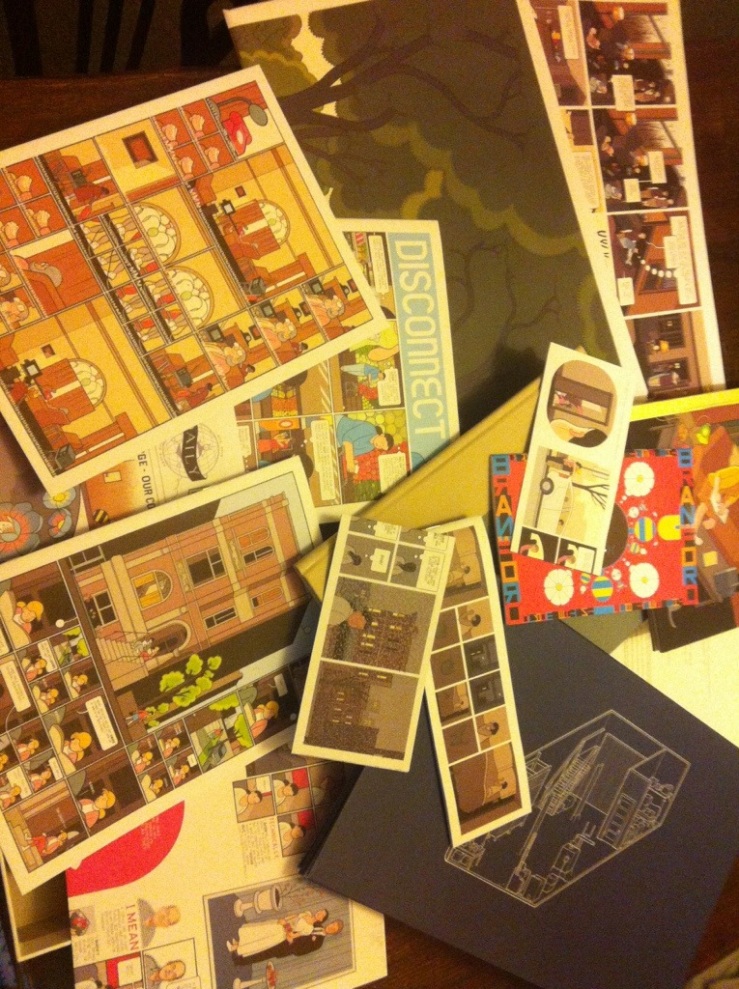
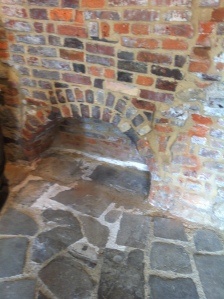
![... and the virtual one. IMG_3613[1]](https://memetechnology.files.wordpress.com/2013/02/img_36131.jpg?w=224&h=300)
